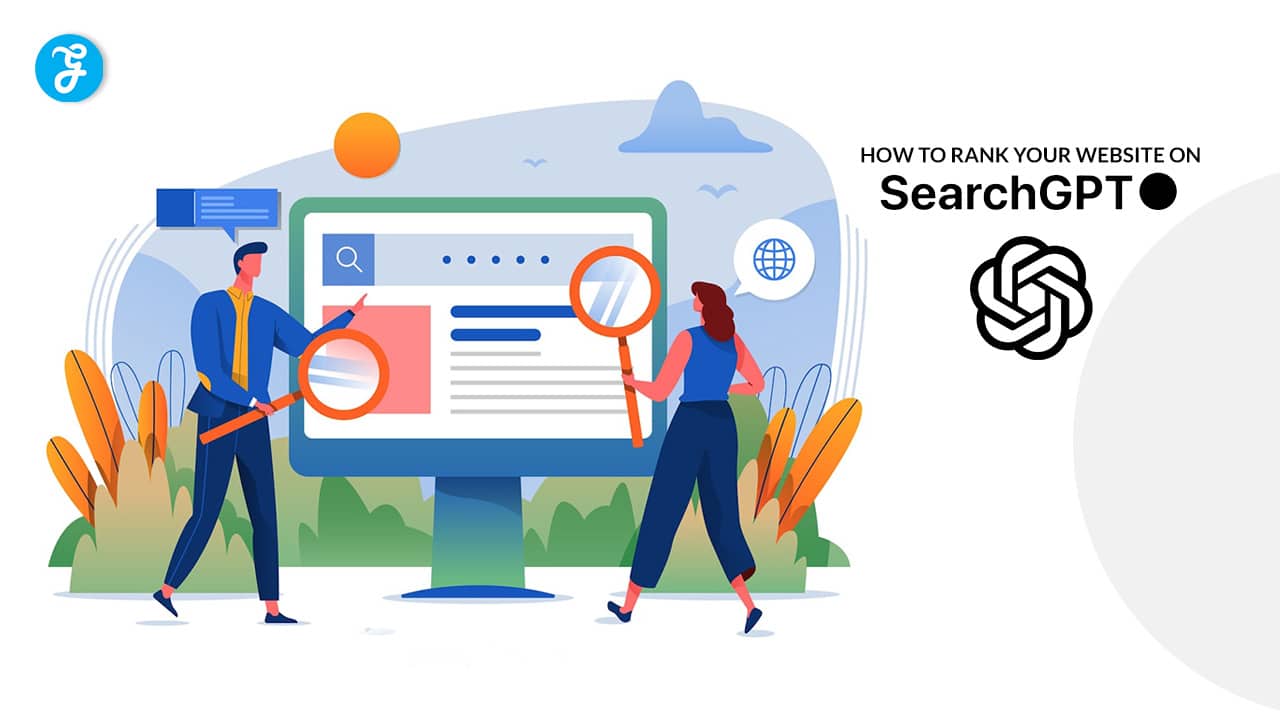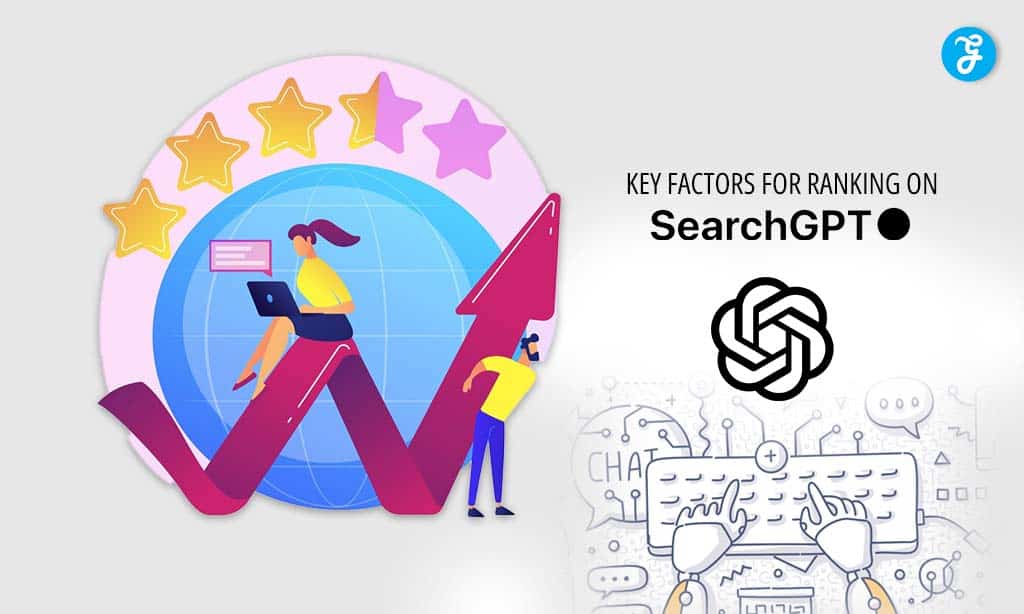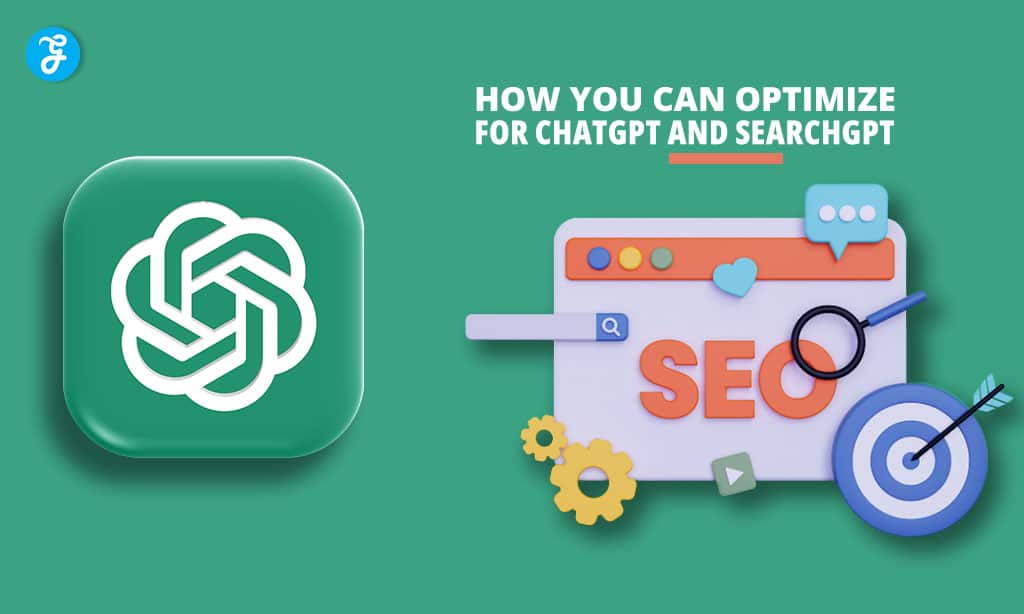In the ever-evolving world of digital marketing, staying ahead of the curve is essential. With the emergence of AI-powered search engines like SearchGPT, the strategies for optimizing and ranking your website have also transformed. Unlike traditional search engines that focus primarily on keywords and backlinks, SearchGPT leverages advanced natural language processing (NLP) and machine learning to understand and rank content. This guide will provide you with practical tips and strategies to rank your website on SearchGPT, ensuring your content stands out in the digital landscape.
An Overview on SearchGPT
Imagine a world where search engines understand exactly what you mean, not just what you type. Welcome to the era of SearchGPT! This groundbreaking AI-powered search engine is changing the way we find information online. If you’re a website owner, content creator, or digital marketer, you’re probably wondering: “How can I make sure my website shines in this new landscape?”
What is SearchGPT?
SearchGPT is an AI-powered search engine that utilizes a sophisticated language model to analyze and rank web content. Unlike traditional search engines, SearchGPT prioritizes understanding the context and intent behind user queries, providing results that are more aligned with what users are genuinely looking for.
How Does SearchGPT Work?
SearchGPT processes information using advanced deep learning techniques. It analyzes the semantic meaning of content, understanding nuances, context, and user intent. This allows it to provide more accurate and relevant search results. Key components of SearchGPT’s functionality include:
- Natural Language Processing (NLP): Interprets human language in a contextually accurate way.
- Machine Learning: Continuously improves search algorithms based on user interactions and feedback.
- Contextual Understanding: Considers the context of search queries to deliver more relevant results.
Key Factors for Ranking on SearchGPT: Your Recipe for Success
1. High-Quality, Informative Content: Be the Expert Your Readers Need
SearchGPT loves content that really helps people. Imagine you’re writing for a curious friend who wants to learn everything about your topic. Use clear, simple language to explain even complex ideas.
For instance, if you have a cooking website and you’re writing about how to make the perfect pizza, don’t just list ingredients and steps. Explain why each step matters. “We let the dough rise for 24 hours because this slow fermentation develops a deeper flavor and a better texture.” This kind of detailed, helpful content is what SearchGPT wants to show its users.
2. Natural Language Optimization: Talk Like a Real Person
Forget about awkwardly stuffing keywords into your content. Instead, write like you’re having a conversation with your reader. Use questions and phrases that people naturally ask.
For example, instead of repeatedly using the phrase “best running shoes,” include sentences like:
- “How do I choose running shoes that are right for me?”
- What features should I look for in a good pair of running shoes?
- “Are expensive running shoes worth the money?”
This approach helps SearchGPT understand the context and intent of your content, making it more likely to show up in relevant searches.
3. User Engagement Metrics: Keep Your Visitors Hooked
SearchGPT pays attention to how people interact with your website. Do they stick around and read more articles? Do they quickly leave? Here are some tips to keep visitors engaged:
- Use short paragraphs and plenty of white space to make your content easy to read.
- Include relevant images, infographics, or videos to break up text and illustrate your points.
- Link to other helpful articles on your site to encourage further exploration.
- End your articles with a question or call-to-action to encourage comments and interaction.
4. Mobile Optimization: Make Sure Your Site Looks Great on Any Device
More and more people are using their phones to search the internet. Make sure your website looks good and works well on smartphones and tablets. Use a responsive design that automatically adjusts to different screen sizes.
5. Page Load Speed: The Need for Speed
In our fast-paced world, nobody likes to wait for a slow website to load. Here are some quick tips to speed up your site:
- Compress your images before uploading them.
- Use a caching plugin if you’re on WordPress.
- Minimize the use of large files or complex scripts.
A faster website makes for happier visitors, and SearchGPT is more likely to recommend sites that provide a good user experience.
6. Structured Data Markup: Help SearchGPT Understand Your Content
Structured data is like giving SearchGPT a map of your content. It helps the search engine understand what your page is about. For example, if you have a recipe site, you can use structured data to clearly indicate ingredients, cooking time, and nutritional information. While it might sound technical, many website builders and plugins can help you add structured data without needing to code.
7. Regular Content Updates: Keep Things Fresh and Exciting
SearchGPT wants to provide the most up-to-date information to its users. Regularly updating your content shows that your site is active and current. This doesn’t mean you need to write new articles every day. Instead, you could:
- Update old articles with new information.
- Add new sections to existing content.
- Create “news” or “updates” sections for your industry.
8. User-Friendly Site Structure: Make Your Website Easy to Navigate
Imagine your website is a store. You want customers to easily find what they’re looking for, right? The same principle applies to your website. Create clear categories and use descriptive menu labels. Make sure every page is reachable within a few clicks from the homepage.
How to Optimize for ChatGPT and SearchGPT: Speaking the AI Language
While ChatGPT and SearchGPT are different systems, they share similar AI foundations. Here’s how you can optimize your content for both:
1. Focus on Conversational Content: Write Like You Talk
Imagine you’re explaining your topic to a friend over coffee. Use a natural, conversational tone in your writing. This matches how people interact with ChatGPT and likely how they’ll search on SearchGPT.
2. Answer Common Questions: Be the Go-To Source
Think about the questions people often ask about your topic. Create content that directly answers these questions. This can help your content appear in featured snippets and voice search results. For example, if you have a gardening website, you might create articles answering questions like:
- “When is the best time to plant tomatoes?”
- “How often should I water my houseplants?”
- “What are easy vegetables to grow for beginners?”
3. Use Clear Headings and Subheadings: Create a Roadmap
Organize your content with descriptive headings (H1, H2, H3, etc.). This makes it easier for both readers and AI systems to understand your content structure. Think of headings as signposts guiding readers through your article.
4. Provide Comprehensive Information: Leave No Stone Unturned
Cover topics thoroughly, anticipating and answering related questions users might have. This positions your content as an authoritative source. If you’re writing about yoga for beginners, don’t just cover basic poses. Include information about breathing techniques, the history of yoga, its benefits, and how to create a home practice routine.
5. Update Content Regularly: Stay Current
Keep your content fresh and up-to-date. AI systems favor current and accurate information. Set a reminder to review and update your most important articles every few months.
6. Optimize for Voice Search: Think Spoken Questions
As AI systems become more integrated with voice assistants, optimizing for voice search can help improve your visibility. People tend to use longer, more conversational phrases when using voice search. For example, instead of typing “weather New York,” someone might ask their voice assistant, “What’s the weather going to be like in New York this weekend?
Google vs. SearchGPT: A Detailed Comparison
Understanding the differences between Google and SearchGPT can help you tailor your SEO strategies to each platform more effectively. Here’s a detailed comparison of the two:
| Feature | SearchGPT | |
| Primary Ranking Factors | Backlinks, keywords, user experience | Content quality, context understanding, user intent |
| Query Understanding | Keyword-based with some natural language processing | Advanced natural language understanding |
| Results Format | Links to websites, featured snippets | More direct answers and conversational responses |
| Content Preference | Well-structured, keyword-optimized content | Natural, conversational content that directly answers questions |
| User Interaction | Limited to search queries and clicks | More interactive, allowing for follow-up questions |
| Local Search Capability | Strong local search features | Improving, but may not match Google’s capability yet |
| Image and Video Search | Advanced image and video search capabilities | Developing capabilities, likely to improve rapidly |
| Personalization | Based on search history and user data | More contextual personalization based on conversation |
| Knowledge Graph | Extensive knowledge graph for quick facts | Likely has a large knowledge base, but exact implementation unknown |
| Handling of Ambiguity | Can struggle with ambiguous queries | Better at clarifying ambiguous queries through conversation |
| Update Frequency | Regular algorithm updates | Continuous learning and improvement (in theory) |
Latest Trends in AI-Powered Search
To keep you up-to-date with the rapidly evolving world of AI search, here’s a table showcasing some of the latest trends:
| Trend | Description | Potential Impact |
| Multimodal Search | Combining text, image, and voice inputs | Websites may need to optimize content for various input types |
| Emotional Intelligence | AI understanding user sentiment and emotion | Content may need to address emotional aspects of queries |
| AR Integration | Blending search results with real-world view | Potential for new types of location-based and visual content |
| Blockchain for Search | Using blockchain to verify information sources | Could impact how content authenticity is evaluated |
| Personalized Knowledge Graphs | Tailored knowledge bases for individual users | May require more diverse content to match varied user interests |
| Quantum Computing in Search | Using quantum algorithms for faster, more complex searches | Could dramatically change how search relevance is calculated |
| Ethics and Bias Detection | AI systems that can identify and mitigate biases in search results | May require content creators to be more aware of potential biases |
Takeaways: Your Journey to SearchGPT Success Starts Now
We’ve traveled through the exciting landscape of SearchGPT together, exploring how this AI-powered search engine is reshaping the digital world. Remember, succeeding on SearchGPT isn’t about tricking an algorithm – it’s about genuinely helping people find the information they need.
Ranking your website on SearchGPT requires a holistic approach that combines traditional SEO techniques with advanced strategies tailored for AI-powered search engines. By focusing on quality content, semantic SEO, structured data, user experience, and engaging multimedia, you can enhance your website’s visibility and relevance in SearchGPT. Additionally, optimizing for ChatGPT involves creating conversational content, ensuring contextual relevance, and continuously updating your information.
The key takeaways? Create high-quality, conversational content that truly answers people’s questions. Make your website a pleasure to use, whether visitors are on a computer or a smartphone. And always keep learning and adapting as the world of AI search evolves.
By staying updated with the latest trends and continuously refining your strategies, you can successfully navigate the complexities of modern SEO and achieve higher rankings on SearchGPT. The key is to prioritize the user experience and provide valuable, relevant, and engaging content.
Don’t be intimidated by these changes. Instead, see them as an opportunity to connect with your audience in more meaningful ways. By focusing on creating valuable content and providing a great user experience, you’re not just optimizing for SearchGPT – you’re building a better website for real people.
So, are you ready to embrace the future of search? Start applying these strategies today, and watch your website thrive in the age of AI. Remember, every great journey begins with a single step. Your step towards SearchGPT success starts now. Good luck, and happy optimizing!















































